Corn is one of my staple crops for both us and the animals, but it has a high demand for plant nutrients.
Corn is usually fertilized during planting, then again 4 weeks later. The first fertilization supplies all the phosphorus and potassium needed, and half of the nitrogen needed. The second application supplies more nitrogen. Corn can be fertilized all at once, but that may negatively impact the soil and harvest.
Proper fertilization depends on the weather, soil quality, and soil nutrient levels.
How to Properly Fertilize Corn
Corn can be fertilized by hand or by machine with either dry or liquid fertilizer. For small plots, sprinkling evenly by hand works quite well. Water-based fertilizers can be applied with watering cans. Large plots can be fertilized with a walk-behind spreader or tractor equipment.
Corn needs nitrogen in the early stages of growth. By the time the tassles are dropping pollen, corn is almost done taking up nitrogen. That’s why it’s so important to get the proper amount of nutrients in the soil right away. You don’t have a lot of time.
One month after germination is about the latest you can apply most fertilizers and get the full effect. It takes a few weeks before the fertilizers start forming the proper chemical compounds for plants to take in. That is a natural process in which soil microbes convert the fertilizer into a usable form.
Weather you use a synthetic or naturally occurring fertilizer product, it still has to go through that process. Even the nutrients in manure have to be converted into the same useable chemical form.
Anyways, to grow good corn you need to get the fertility at least half right around the time of planting and you have, depending on the variety, 3-5 weeks to get any other needed fertility in the soil. With corn around the 90-day maturity mark, it’s a 3-4 week range.
Before you fertilize for corn, you need to know just how much fertility your soil is holding. You can guess based on what you grew the previous year, how it grew, and how much fertilizer you applied last year. But, that doesn’t work well. Even with 40 years of experience, it’s still just a guess if you’ve not done soil tests.
You need to at least do a simple DIY soil test. I recommend the Luster Leaf 1601 soil test kit. It’s cheap and works well. It’s not uber-precise, but it’s pretty good. Basically, it runs on a scale from low to high. You want results in the upper end for corn, at the top, or very nearly so.
In a field-type setting, there is usually very little fertilizer left over from the previous year. It’s mostly used up and the rest is washed away. The standard corn fertilizing application rates are based on that, starting out with fairly infertile soil. If you have good topsoil and a nice, fertile soil base, that’s a bit different.
That’s where the soil test comes in handy. It shows you the amount of available plant nutrients in your soil. If your soil tests fairly barren, you can use the regularly recommended fertilizer amounts. If it tests halfway or more, you need to lessen the application.
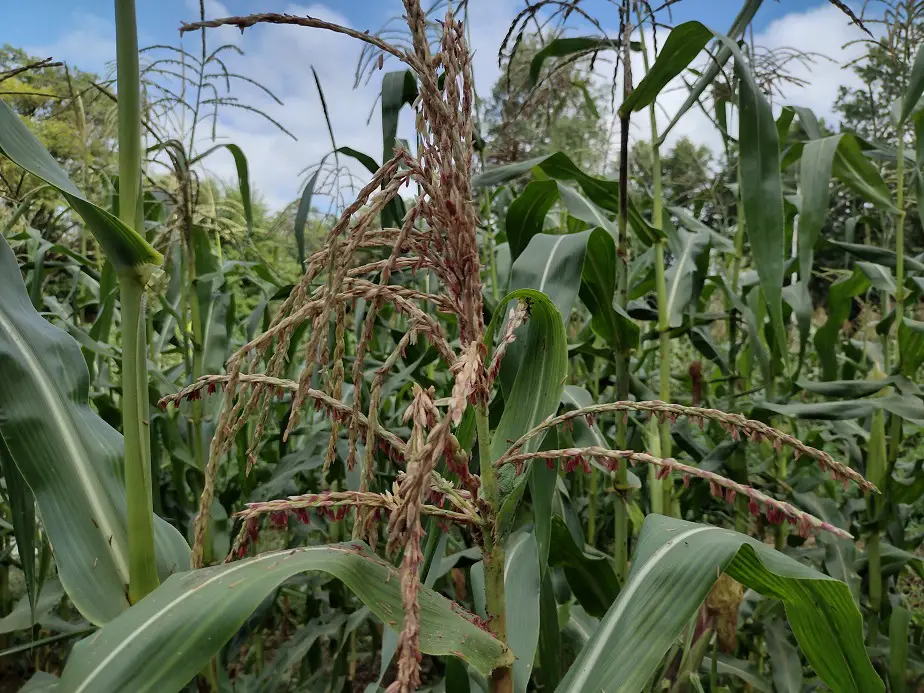
How Much Fertilizer for Corn
Corn is usually fertilizer at a rate of 200 pounds of nitrogen per acre, 100 lbs. phosphorus, and 170 lbs. potassium per acre. In very organic soil, phosphorus is likely adequate but you still probably need nitrogen and potassium. In very sandy soil, the application is increased by 50 percent or more.
Most garden magazines and websites recommend something like 2 or 3 pounds of 10-10-10 fertilize per 100 square feet. That’s nowhere near enough for most gardens. That’s like 100 to 130 pounds N per acre, about half of what’s usually recommended.
Think of it like this, Pumpkins are usually fertilized at 100 pounds N per acre. Corn needs twice what pumpkins need. Corn usually needs near 200 pounds N, 100 pounds P, and 170 pounds K per acre. That’s a ratio of 20-10-17. the numbers can be rounded down a little, but not usually a lot.
I don’t usually get those exact ratios, but I consider it the baseline of a healthy soil fertility for corn. Usually, I end up adding a bit more nitrogen and phosphorus and than needed, just because it’s hard to get the mix just right. I usually mix my own fertilizer based on what my soil needs.
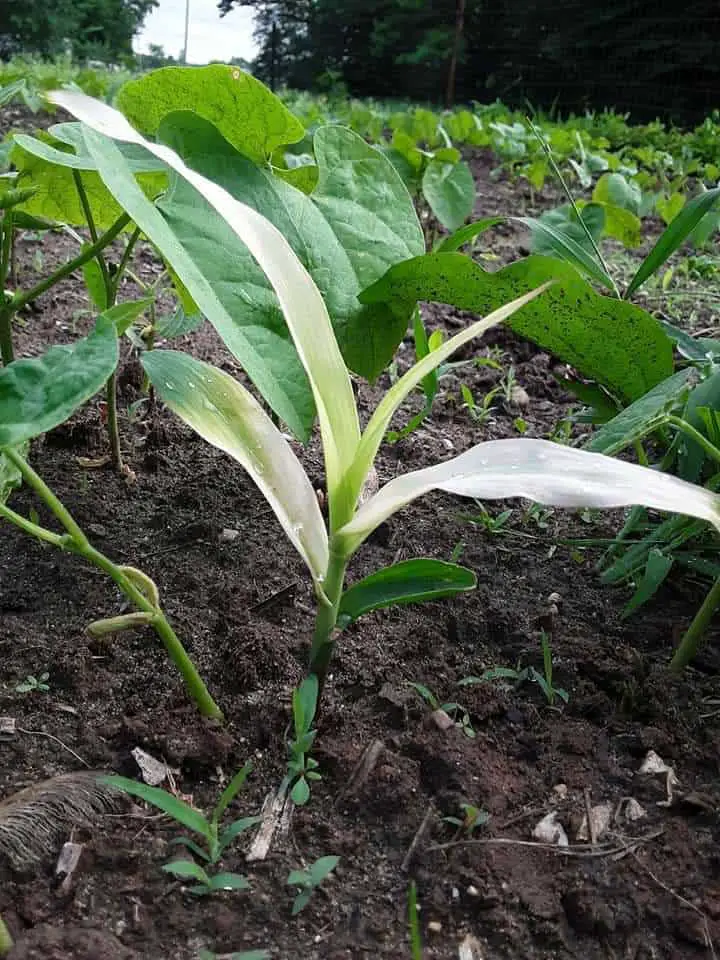
Best Fertilizer for Corn
The most appropriate ready-to-use fertilizer for corn is regular Miracle Grow. It has an NPK of 24-8-16, which is very close to what corn needs for macronutrients, but it’s expensive. 10-10-10 or other even numbered fertilizers need nitrogen added. Organic options also need a custom blending for corn.
For small garden plots of corn, MIraclr Grow may make sense. You can use that at a rate of 200 pounds of nitrogen per acre. That’s 18 pounds of fertilizer per 1,000 square feet or about 2 pounds per 100 square feet. Trouble is, that stuff is expensive.
If you want to grow a patch large enough to feed animals or fill a corn crib, you need a cheaper option. I keep my costs way down by using a 20-20-20 fertilizer with added nitrogen.
The simplest mix I’ve come up with that does pretty good is: one part urea, four parts 20-20-20 by weight. The result is a fertilizer with an NPK of 26-15-15. An ideal mix would come closer to 20-17-10. My custom mix has a bit extra nitrogen and phosphorus and is a tiny bit low in potassium.
But, it seems to work well. When you have good, rich soil, it’s fairly forgiving. Phosphorus has a tendency to build up on the soil. Too Much phosphorus will end up locking in other nutrients in the soil so they can’t be used. It’s a very heavy mineral that doesn’t leach away much, and it attracts other minerals.
The idea of just fertilizing with a 10-10-10 type fertilizer can work sort of, but it’s hard if that’s all you have and will probably end up causing issues in the soil.
If I fertilized with 10-10-10 for corn, the extra phosphorus will linger. I could plant a crop of say turnip next to use up the extra mineral. But then turnips also need some nitrogen. I can’t just add more 10-10-10 because that’s going to put even more phosphorus in the soil. You really need at least 2 types of fertilizer.
That’s why I settled on a 20-20-20 (what’s locally available) and Urea. It’s very easy to create a blend that will do for pretty much anything from those two.
It would take several years of adding too much phosphorus to pose a problem. That’s plenty of time to balance it by working in some crop rotation or cover cropping or both.
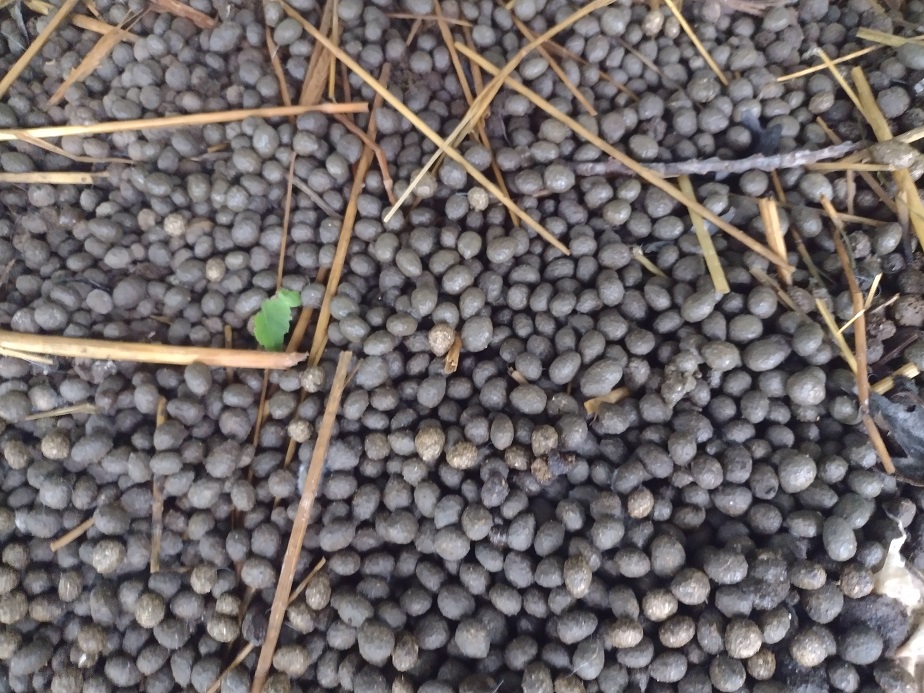
Fertilizing Corn With Manure
Corn can be properly fertilized with manure, provided it’s high enough in nitrogen. Poultry manure is considered the best, but any fresh manure will have decent fertility.
For what it’s worth, I do most of my fertilizing with manures; chicken manure, pig manure, and rabbit manure. The other stuff just balances it out. Last season, used about 1/2 the granular fertilizer of what’s usually recommended because of the fertility I gained from adding manure.
The only problem with manure is that it tends to be old by the time it’s applied so it’s often low in nitrogen. The chicken manure is stronger in nitrogen and helps to balance that out some. Working with manures is an art to itself. Basically, test the soil a lot to monitor changes in fertility and adjust accordingly.
Here is an excerpt and table from an article I wrote on fertilizing with manure. You can find the entire article here
This is how much manure to apply in order to add the average recommended 50 lbs. of nitrogen per acre (1 pound per thousand square feet), per year. Remember, corn needs around 200 lbs per acre.
| *heaping full | Manures with about 1 percent nitrogen | Manures with about 2 percent nitrogen | Manures with about 3 percent nitrogen |
| For 100 square feet | 5, 5-gallon buckets/ half a wheelbarrow* | 2.5 5-gallon buckets | 8-gallons |
| For 1,000 square feet | 50 5-gallon buckets/ 5 wheelbarrows* | 25 5-gallon buckets/ 2.5 wheelbarrows* | 16 5-gallon buckets/ 1.5 wheelbarrows* |
| For an acre | 200 5-gallon buckets/ 20 wheelbarrows*/ 37 yards | 100 5-gallon buckets/ 10 wheelbarrows*/ 18 yards | 66 5-gallon buckets/ 6 wheelbarrows*/ 12 yards |
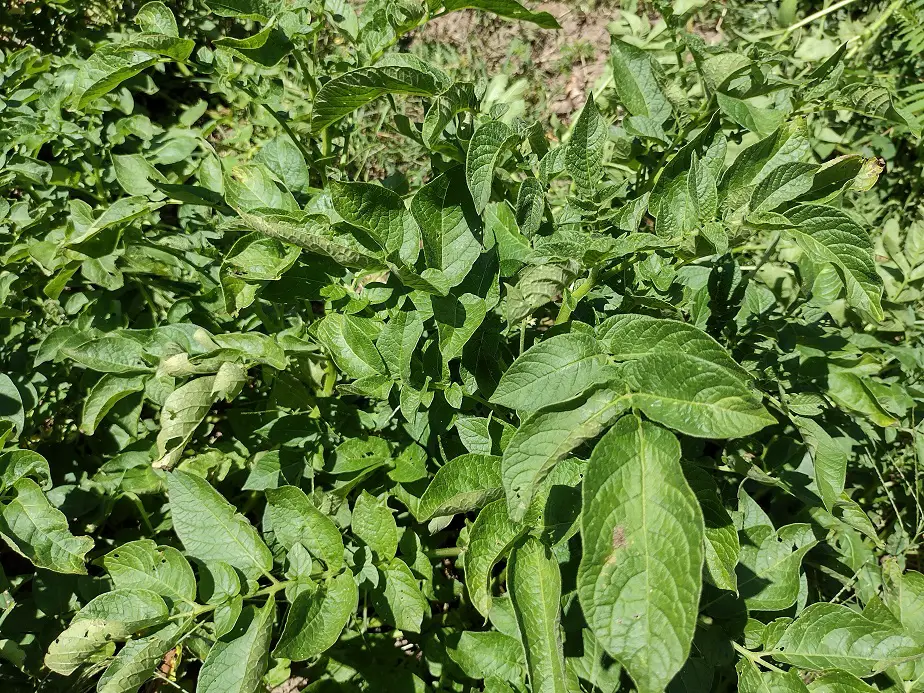
Crop Rotation and Cover Crops After Corn
Traditionally, corn is followed by a low-fertilized crop like grains, beans, sugar beets, or turnips. I like to follow corn with potatoes because I end up with extra phosphorus, and potatoes need extra phosphorus. After corn, a low-nitrogen needing or a nitrogen-fixing crop is usually the best bet.
Honestly, you can plant anything after planting corn and some folks just keep planting corn. If you’re going to do that, and sometimes situations dictate it, You need to really monitor your soil. Corn is a heavy user of calcium and magnesium and to many crops in a row can start depleting soil of them.
Especially if you’re not putting the stubble and cornstalks back in the soil. It causes nutrient loss, soil degradation, and soil erosion. That’s what caused the great Dustbowl Famine of North America 1930s.
A combination of drought and pillaging the soil caused fields to lose several feet of topsoil and dust storms hundreds of feet high from Texas to Cannada. Let’s not do that again. We can avoid that type of problem forever by adding plant matter to the soil and by cover cropping.
My favorite cover crops after corn are garden beets, turnips, and radish (any kind). They are planted immediately after harvesting the corn. They grow fast, do well in the late summer/fall temperatures, and are great animal feed. They’re about the only crops I can fully grow to harvest in that short window.
I’ll make a note here. Anything that I grow for animal feed is ultimately put back into that soil as manure. I also top them and leave the leafy portion to break down in the soil. It’ll be gone by spring. Grazing animals love the root crops and they store decently as a winter feed.
Pigs will nibble at the beets, but won’t usually eat radishes or turnips. These roots a more of a sheep, cow, goat, or rabbit feed. If you don’t have those animals, just plan to leave them in the ground over winter. It’ll be an incredible soil boost.
Other good cover crop options are wheat, oats, and rye. I prefer cover crops that are easily killed by mowing, crushing, or light tilling, or that winter kill by themselves.
I plant smaller areas and certainly have different methods than the larger acreage farmers in my area. When I harvest the corn, I chop down the stalks so they’re only a foot tall. Then I run my lawnmower over the stubble. Next, I’ll plant between the rows using my Earthway seeder, or sprinkling by hand.
If the ground is too tough, a quick run-through with the rototiller will soften it between the rows. The cornstalks removed will be used for animal bedding then returned to the soil after breaking down. You always gotta remember to take care of your soil by giving back to it. It’s a simple system.
Related Articles:

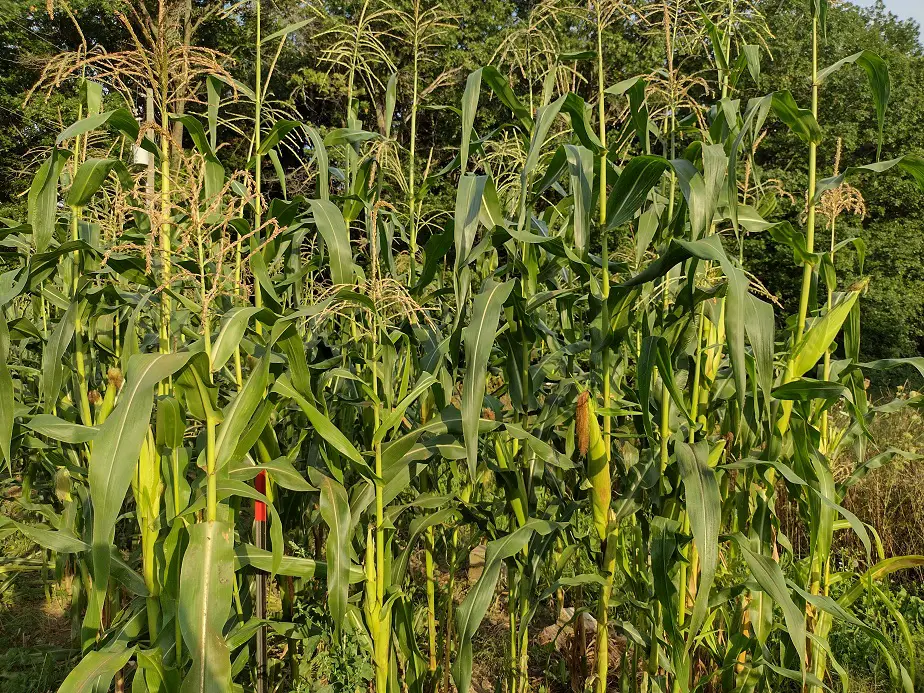
Very good advice. Thank you! Recently retired and an hopefully able to return to raising vegetables and animals. I was raised on a rice and soybean farm in southern Louisiana, so, ag processes in general are not at all foreign to me. Some crops, such as corn have always been a home garden crop for us and not a retailing, big acreage crop. For many years, I planted raised beds only. Because of he extensive travel required in my work, I had very little home time available for gardening. My intention is to grow everything as close to totally organic as possible and feasible. Thanks again for the valuable advice you’ve provided.
That’s awesome! And you’re very welcome.